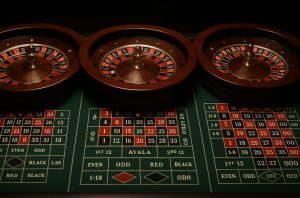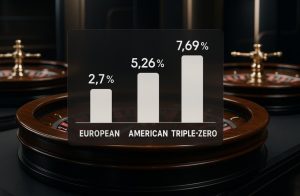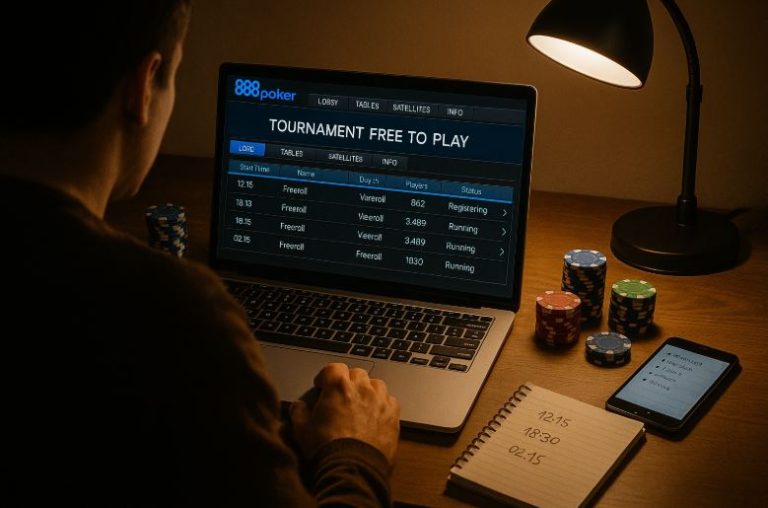How Many Numbers on a Roulette Wheel and What Do They Mean?
Roulette is a classic casino game known for its spinning wheel and thrilling gameplay. But behind its apparent simplicity lies a game structured around precision, probabilities, and variants.
One of the most common questions among newcomers is: How many numbers are on a roulette wheel, and what do they actually mean? This guide breaks down the layout, colour rules, bet types, and number sequences across different roulette versions.
What Is the Total Number of Pockets on a Roulette Wheel?

The total number of pockets on a roulette wheel is determined by the type of roulette being played. These variations were developed over time to create a range of house advantages and gameplay styles. The three most common versions include:
- European Roulette: 37 pockets in total, with numbers 1 through 36 and a single zero (0). This is the most player-friendly version due to its lower house edge.
- American Roulette: 38 pockets, including numbers 1 through 36, a single zero (0), and a double zero (00). This extra pocket increases the house edge.
- Triple-Zero Roulette: A newer version with 39 pockets, adding a triple zero (000) in addition to the 0 and 00. This significantly raises the house edge and is less common.
Each added zero reduces the odds for players by increasing the number of ways a bet can lose. The type of wheel being used directly impacts betting strategies and game outcomes.
How Are the Numbers Arranged on a Roulette Wheel?
The number arrangement on a roulette wheel is anything but linear. The goal of this design is to ensure an even distribution of number types across the wheel’s surface. Rather than grouping high or low numbers, reds or blacks together, they are spaced apart in a balanced sequence to avoid patterns.
In a European wheel, the layout begins with zero at the top and then continues around the wheel in the following sequence:
0, 32, 15, 19, 4, 21, 2, 25, 17, 34, 6, 27, 13, 36, 11, 30, 8, 23, 10, 5, 24, 16, 33, 1, 20, 14, 31, 9, 22, 18, 29, 7, 28, 12, 35, 3, 26
For an American wheel, which includes an additional double zero, the sequence is different:
0, 28, 9, 26, 30, 11, 7, 20, 32, 17, 5, 22, 34, 15, 3, 24, 36, 13, 1, 00, 27, 10, 25, 29, 12, 8, 19, 31, 18, 6, 21, 33, 16, 4, 23, 35, 14, 2
The addition of a triple zero in newer wheels follows the same general principle but with even further spacing of the zeroes:
0, 000, 00, 32, 15, 19, 4, 21, 2, 25, 17, 34, 6, 27, 13, 36, 11, 30, 8, 23, 10, 5, 24, 16, 33, 1, 20, 14, 31, 9, 22, 18, 29, 7, 28, 12, 35, 3, 26
This deliberate sequencing is key to maintaining fairness and unpredictability in the game.
Why Do the Colours on a Roulette Wheel Matter?
Each roulette wheel includes pockets in red, black, and green, each signifying specific types of numbers. These colours aren’t just aesthetic, they play a crucial role in several popular betting options.
- In numbers 1 to 10 and 19 to 28, odd numbers are red and even numbers are black.
- In numbers 11 to 18 and 29 to 36, odd numbers are black and even numbers are red.
- The single zero (0), double zero (00), and triple zero (000) are all green, distinguishing them from the rest of the board.
This colour distribution supports even-money bets, like red or black and odd or even, while also maintaining a visual balance across the wheel. The presence of green zeroes ensures that the house retains a statistical edge, even on bets with a 50/50 appearance.
What Do the Different Roulette Wheel Variants Offer?

Each roulette variant provides a different structure, which in turn alters the gameplay and odds for players. These variants include:
| Variant | Number of Pockets | House Edge | Zeros Present |
| European Roulette | 37 | 2.7% | 0 |
| American Roulette | 38 | 5.26% | 0, 00 |
| Triple-Zero | 39 | 7.69% | 0, 00, 000 |
European roulette is considered the most player-friendly, as it offers the smallest house edge. In contrast, the American and triple-zero formats raise the house advantage, making it harder for players to achieve consistent winnings.
How Do Inside Bets Work in Roulette?
Inside bets are made directly on the numbered grid of the roulette layout and are typically riskier, offering higher payouts in return. These bets focus on specific numbers or combinations.
| Bet Type | Description | Chip Placement |
| Straight | A single number | Inside the square |
| Split | Two adjacent numbers | On the shared line between them |
| Street | Three numbers in a horizontal line | On the outer edge of the row |
| Corner | Four numbers that form a square | On the shared corner of the four |
| Six Line | Two adjacent streets (six numbers) | At the end of the two rows |
| Trio/Basket | 0-1-2 or similar depending on wheel type | Shared corner between the three |
| First Four | 0-1-2-3 (single-zero wheel) | Outer corner between 0-1 or 0-3 |
| Top Line | 0-00-1-2-3 (double-zero wheel) | Outer corner near 0-1 or 00-3 |
While the odds of winning inside bets are lower, the rewards can be substantial, especially when betting on single numbers or rare combinations.
What Are Outside Bets and How Are They Placed?
Outside bets cover larger groups of numbers and offer better odds, although with lower payouts. These are popular with beginners due to their simpler structure and increased likelihood of success.
- Red or Black: A bet on the outcome being either colour.
- Even or Odd: Wagering on the parity of the winning number.
- Low (1–18) or High (19–36): A 50/50 chance on the range.
- Dozen Bets: Betting on 1–12, 13–24, or 25–36.
- Column Bets: Each of the three vertical columns.
- Snake Bet: Covers 1, 5, 9, 12, 14, 16, 19, 23, 27, 30, 32, and 34 in a zig-zag pattern. This bet is not standard and is only allowed in some casinos.
Outside bets are generally seen as a safer option and are often recommended for those new to the game.
What Are the Odds and Payouts for Each Roulette Bet?
The payouts in roulette vary according to the type of bet placed. Inside bets offer the highest payouts but the lowest odds, while outside bets provide smaller returns with greater chances of winning.
| Bet Type | Payout | Odds Against (EU) | Expected Value (EU) |
| Straight (1 number) | 35:1 | 36 to 1 | -£0.027 |
| Split | 17:1 | 17.5 to 1 | -£0.027 |
| Street | 11:1 | 11.33 to 1 | -£0.027 |
| Corner | 8:1 | 8.25 to 1 | -£0.027 |
| Double Street | 5:1 | 5.16 to 1 | -£0.027 |
| Dozen/Column | 2:1 | 2.08 to 1 | -£0.027 |
| Even/Odd/Red/Black | 1:1 | 1.06 to 1 | -£0.027 |
The presence of one or more zeroes on the wheel is what provides the house edge, tipping the odds slightly against the player over the long term.
How Does the Roulette Wheel Affect Your Strategy?

Roulette may appear to be a game of pure chance, but the design of the wheel and the specific rules applied by the casino can significantly influence the way players approach the game.
Whether you’re a beginner or a more experienced player, understanding how the roulette wheel impacts your strategy is crucial for improving your long-term play.
Wheel Variants and Their Impact on Betting
The type of roulette wheel in play, European, American, or triple-zero, has a direct effect on the house edge and, in turn, the player’s strategic decisions.
- European Roulette, with its single zero, is preferred by players aiming to minimise the house advantage. This format is often the best choice for applying structured betting systems like the Martingale or Fibonacci, where outcomes are dependent on near-even probabilities.
- American Roulette introduces an additional zero (00), increasing the total number of pockets to 38. This change significantly impacts strategies that rely on near-even odds, such as red/black or even/odd bets. Players often need to account for this extra disadvantage when choosing this version.
- Triple-Zero Roulette is the least favourable for players. With three green pockets (0, 00, and 000), the house edge is higher than in any other version, making many traditional strategies less effective.
The Role of the Zero in Betting Systems
Zeros on the roulette wheel represent the house’s edge. When the ball lands in a green pocket, most bets lose, especially even-money wagers. This is where the strategy begins to shift.
For example, in betting systems that target even-money outcomes (such as black, red, even, or odd), the presence of a single zero reduces the chance of success from 50% to 48.6%. In American roulette, with both 0 and 00, this probability drops further.
Players who rely on progression systems, where you double your bet after a loss, must be particularly cautious, as the additional zeros can lead to prolonged losing streaks, quickly exhausting a bankroll.
Rules That Modify Risk: En Prison and La Partage
In some European and French versions of roulette, casinos may offer rules that slightly alter the odds in the player’s favour on even-money bets.
- La Partage: If the ball lands on zero, players lose only half their even-money bet, instead of the full amount. This rule effectively reduces the house edge on these bets to 1.35%.
- En Prison: The player’s even-money bet is “imprisoned” when a zero lands. If the next spin wins, the original bet is returned. If it loses, the full bet is forfeited. This rule has a similar effect to la partage in reducing the house edge.
In both cases, these rules do not affect all bets, but they do make a noticeable difference in long-term play for even-money wagers.
Choosing Bets Based on Wheel Type
Strategy also depends on how aggressive or conservative a player wishes to be. The layout and variant of the wheel should influence this decision.
On a European wheel, it may be worthwhile to explore inside bets such as streets or corners, due to the lower overall risk presented by the house edge. On an American wheel, however, many experienced players recommend focusing on outside bets to mitigate the effects of the higher edge.
While there is no guaranteed way to beat the wheel, aligning your betting style with the type of roulette being played is one of the most important strategic decisions a player can make.
Bankroll Management and Risk Tolerance
Regardless of wheel layout, managing your bankroll remains central to any successful roulette strategy. The unpredictability of where the ball lands means that even sound strategies can result in short-term losses.
Players should:
- Set a strict budget and avoid chasing losses
- Choose wheels with lower housing edges whenever possible
- Use betting systems conservatively, particularly on wheels with multiple zeros
Roulette rewards those who approach the game with patience, awareness of odds, and a strategy tailored to the specific conditions of play.
What Is the House Edge in Different Roulette Games?

House edge is a critical factor that determines the profitability of roulette over time for the casino. In essence, it’s the mathematical advantage the house holds over the player.
- European Roulette: Offers a house edge of 2.7%, making it the most player-friendly version.
- American Roulette: The inclusion of an additional ‘00’ increases the edge to 5.26%.
- Triple-Zero Roulette: The newest variation pushes the edge even higher, up to 7.69%.
Casinos may implement player-favourable rules like en prison and la partage for even-money bets. These rules can reduce the effective house edge to 1.35% on a European wheel, which is one reason players often seek out French or European versions of the game.
FAQs About Roulette Wheel Numbers and Bets
What does the green zero on a roulette wheel represent?
It acts as the house’s advantage, and it causes all even-money bets to lose unless special rules are applied.
Are the numbers on every roulette wheel the same?
No. European and American wheels follow different sequences, and the American version includes an extra ‘00’.
Why is the number layout different from a standard sequence?
The layout is designed for visual and gameplay balance, alternating odd/even and red/black to avoid predictability.
Is European roulette better for players?
Yes. With a single zero and a lower house edge, it offers better odds compared to American or Triple-Zero roulette.
Can you beat roulette with a system?
No system guarantees a win, but strategies like the Martingale can manage risk. The game always carries a house edge.
What is the ‘snake bet’ in roulette?
It’s a bet that follows a snaking number pattern (e.g., 1, 5, 9…) and is placed on a unique path across the table layout.
What happens if a zero comes up on an outside bet?
You typically lose your bet, unless rules like en prison or la partage are in place, in which case you may recover part or all of it.
Disclaimer:
UK Casino Blog does not operate or promote any form of gambling. All content is for news, analysis, and educational purposes only. Please gamble responsibly and seek help if you are affected by gambling-related issues.







